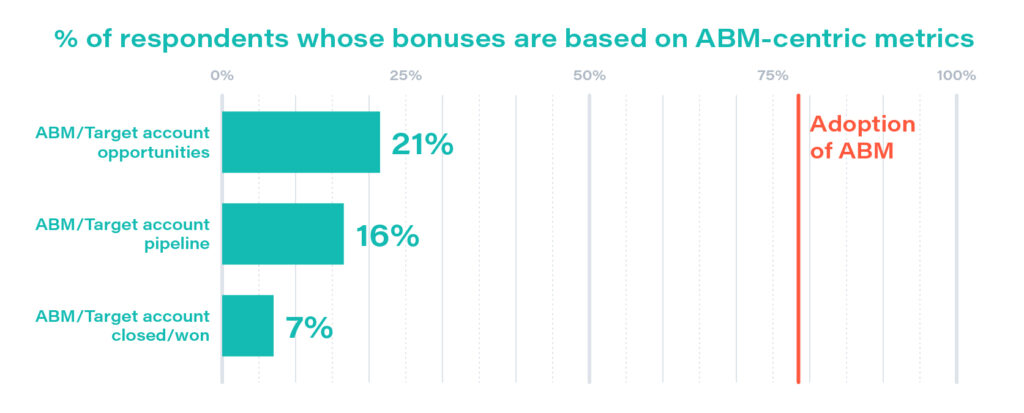Let’s say you’re a B2B marketer and the fiscal year has just ended. It’s time for you and your team to be assessed on your performance.
You and your team have employed an account-based go-to-market strategy all year. It feels like you’ve contributed to meaningful progress thanks to your tight focus on the best accounts.
Then your manager sits you down and the next thing you know, you’re not being measured on ABM-centric metrics. You’re being measured on… MQLs.
What is wrong with the scenario stated above? Choose one from the list below:
- Constant changes to digital ad platforms mean a year-over-year apples-to-apples comparison is impossible — it’s more like comparing apples-to-octopuses.
- It’s unlikely that these marketers would be undergoing an end-of-year assessment
- The marketers practice account-based marketing but aren’t measured by account-centric metrics
If you have selected Option 3, you are correct. And, if this scenario sounds familiar to you and what happens at your organization, you aren’t alone.
You Can’t Spell ROI Without ‘ABM KPI’
6sense Research recently surveyed 398 B2B marketers to understand how their companies measure the marketing organization’s contribution to the production of pipeline and revenue growth.
Seventy-eight percent of marketers we surveyed said their companies employ account-based marketing programs (ABM), but half or fewer said their organizations track account-centric metrics.
Visualized in the graph below, you can see this lag in adoption displayed across nine account-centric measurements that were included in the survey. For example, while 78% of respondents practice ABM, only 43% of them measure ABM/target account opportunities.
78% of marketers practice account-based marketing but just over half or less track account-centric metrics
Even more notable, when looking at whether three account-centric metrics are included in respondents’ variable-based salary bonuses, the discrepancy between that and ABM adoption grows even larger. Only 21% of marketers said their compensation was connected to target account opportunities tied to their ABM efforts.
78% of marketers practice account-based marketing but only 21% or less are rewarded according to relevant metrics

Thus, not only are there ABMers who lack metrics they can lean on to understand the effectiveness of their ABM strategy throughout the year, but often they also aren’t being rewarded according to relevant performance indicators.
How do marketers affected by this disparity feel about it? As you can imagine, not very good.
We separated respondents that practice ABM into three groups:
- ABMers with low adoption of ABM-centric metrics (0 to 4 metrics)
- ABMers with moderate adoption of ABM-centric metrics (5 to 8 metrics)
- ABMers with high adoption of ABM-centric metrics (9 to 12 metrics)
Across the three groups, those in the lowest metric adoption category were more likely to rate the way their organization measures them as “moderately unfair” whereas those in the high adoption group were more likely to rate it as “fair.” Meanwhile, those in the moderate adoption group rated the way they’re measured as somewhere in between “moderately unfair” and “fair.”
The more ABM-centric metrics tracked, the more likely account-based marketers are to think the way they’re measured is fair
Note: The differences in groups visualized in this graph represent small, but statistically reliable differences.
While it’s easy to understand why doing one thing and measuring another is recognized as unfair to marketers and how their performance is measured, what remains a mystery is why these organizations engage in such behavior.
Employing ABM but neglecting to adopt the appropriate metrics is a fast-track to waste and misalignment. While it’s promising that so many B2B organizations have committed to making the switch to ABM, it’s apparent that they have not yet fully transitioned.






